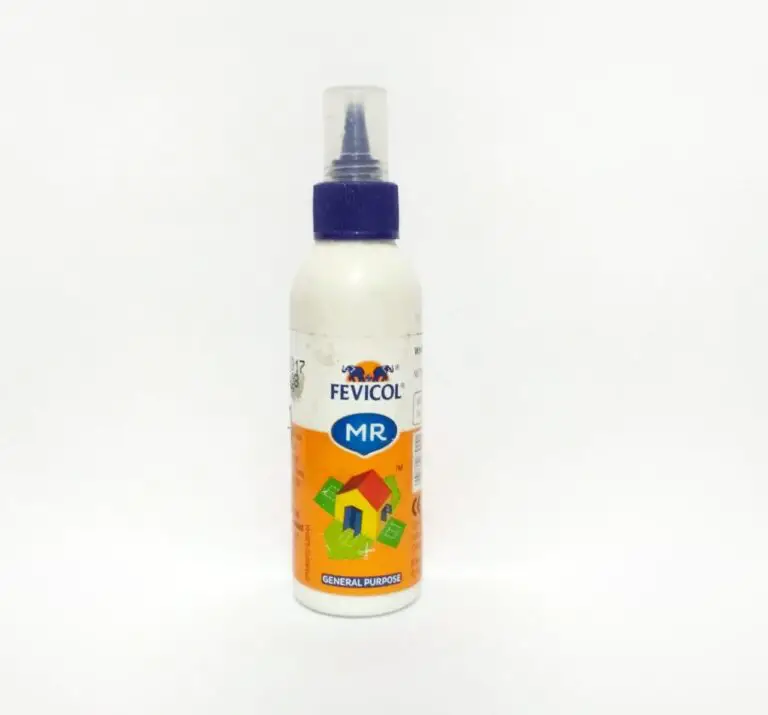Quilling is an art that involves rolling and shaping thin strips of paper into intricate patterns. It is a popular craft that can be used to make decorative pieces such as cards, wall hangings, and even jewelry. Choosing the right glue is essential for this craft to ensure that your creations will stay together. PVA glue, also known as white glue or wood glue, is the most popular choice for quilling. It is easy to use and dries clear, so it won’t discolor the paper.
Furthermore, it provides a secure hold that won’t easily come undone. Glue sticks are also great for quilling as they are easy to apply and don’t make a mess. However, they might not provide a strong enough bond for heavier pieces. If you are looking for a stronger glue to use with your quilling projects, you can consider using a hot glue gun. While hot glue won’t provide the same clear finish as PVA glue, it can be used to secure heavier pieces and create more intricate designs. No matter which glue you decide to use, make sure to apply it sparingly. Going overboard with the glue can make your quilling project look messy and will take away from the overall effect.
What is the best glue to use for quilling
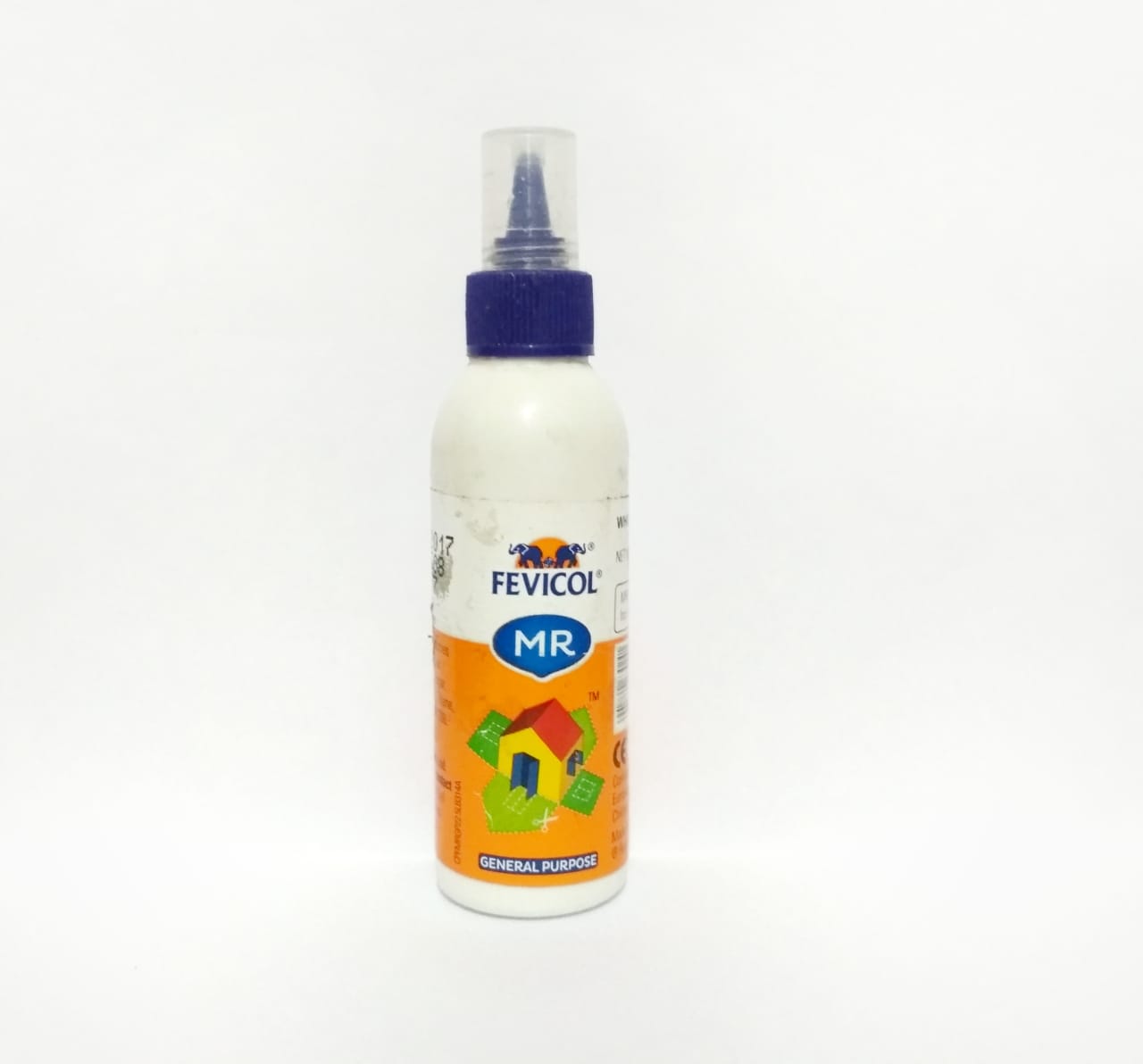
When creating quilling projects, choosing the right glue is essential to ensure a finished product that looks neat and professional. PVA glue, also known as Elmer’s glue, is the best glue to use for quilling because it is non-toxic, dries clear, and is very easy to use. It is available in both liquid and paste form, and can be used to attach paper quilling to other surfaces such as wood, glass, or fabric. For more detailed designs, tacky glue is the best choice. It is stronger than PVA glue and has a longer drying time, so it gives you more time to position each quilling shape before it becomes stuck.
It is also great for attaching embellishments such as pearls and gems to your quilling projects. A glue gun is an ideal tool for any quilling enthusiast as it can be used to attach thicker or thicker strips of paper. The glue dries quickly and is waterproof, making it perfect for use outdoors. It can also be used to attach quilling to non-porous surfaces such as metal or plastic. For those who don’t have access to glue guns, double-sided tape is a great adhesive alternative. It is strong enough to secure quilling shapes and is ideal for projects that need to be moved frequently. It also does not wrinkle the paper like some other glues, so it is great for creating neat and tidy quilling designs.
How to get started with quilling?
To get started with quilling, the most important tool you need is glue. Different types of glue can be used for quilling, such as PVA glue, white glue or glue sticks. PVA glue is the most popular choice because it is strong and dries quickly. White glue is also a good choice, as it is easy to use and dries clear. Glue sticks are great for quick projects, as they dry quickly and don’t leave a mess.
When using glue for quilling, it is important to apply it evenly and accurately to ensure a strong bond. If the glue is applied too thickly, the quilling pieces can stick together. To apply the glue, use the tip of a toothpick, a pin or a quilling tool. For larger projects, consider using a glue gun for a stronger bond. Once the glue has been applied, hold the quilling pieces together for a few seconds until the glue starts to set. Once the glue is dry, the quilling pieces should be firmly attached. With the right tools and a bit of practice, you can get started with quilling in no time. Have fun and enjoy creating beautiful pieces of art!
Can you use printer paper for quilling?
To create these shapes, you need specific supplies, such as a quilling tool, quilling paper, and glue. When it comes to quilling paper, commonly used paper is thin, lightweight, and easy to shape, such as printer paper. You can certainly use printer paper for quilling, although it may not hold its shape as easily as quilling paper. When it comes to glue, you have a few options. A glue stick can be used to hold the quilled shapes together, but it won’t give you a strong bond.
For a stronger bond, a craft glue, such as a tacky glue, is recommended. You could also use a glue gun, but be aware that it will create a harder finish and may not be as pliable to shape or reshape your quilled designs. So, to answer the question: yes, you can use printer paper for quilling, but be aware that you may need to use a strong glue to ensure that your quilled shapes keep their shape.
What supplies do I need for quilling?
If you want to get started with quilling, you’ll need to make sure you have the right supplies. The most important supply for quilling is the quilling tool. This tool helps you roll and shape the paper strips into different shapes and designs. You will also need a cutting tool to cut the paper strips into the correct size. When it comes to glue, you should use a glue specifically designed for quilling.
This type of glue will hold the paper securely in place and won’t damage the paper. You will also need a foam board or other flat surface to work on, as well as a pair of tweezers. Finally, you will need a variety of colored paper strips to create your quilling designs. Once you have all of your supplies, you can start creating beautiful quilling designs. Have fun and enjoy your quilling adventure!
How to cut your own Quilling paper strips?
Quilling paper strips are an essential part of quilling art. Cutting your own strips allows you to customize and create unique designs. Here’s a simple guide on how to cut your own quilling paper strips. First, gather a pair of scissors and quilling paper. Make sure the scissors are sharp to get accurately cut strips.
Place the quilling paper on a flat surface and cut the paper into strips of desired width. Try to keep the strips of equal width to get more uniform quilling designs. When cutting the quilling paper, you may use a ruler to measure and mark the paper before cutting to get strips of the same width. If you wish to make strips with different widths, then you can also mark the paper at different lengths and then cut accordingly. For quilling projects that require gluing the strips, use a glue specifically designed for quilling. Glues like PVA or Elmer’s Glue are great for quilling and will give you the best results for your projects. Once the strips are cut, you can begin to create beautiful quilled designs. Just follow the instructions of the project and you’re sure to get stunning quilling results!
What is the best glue for paper quilling
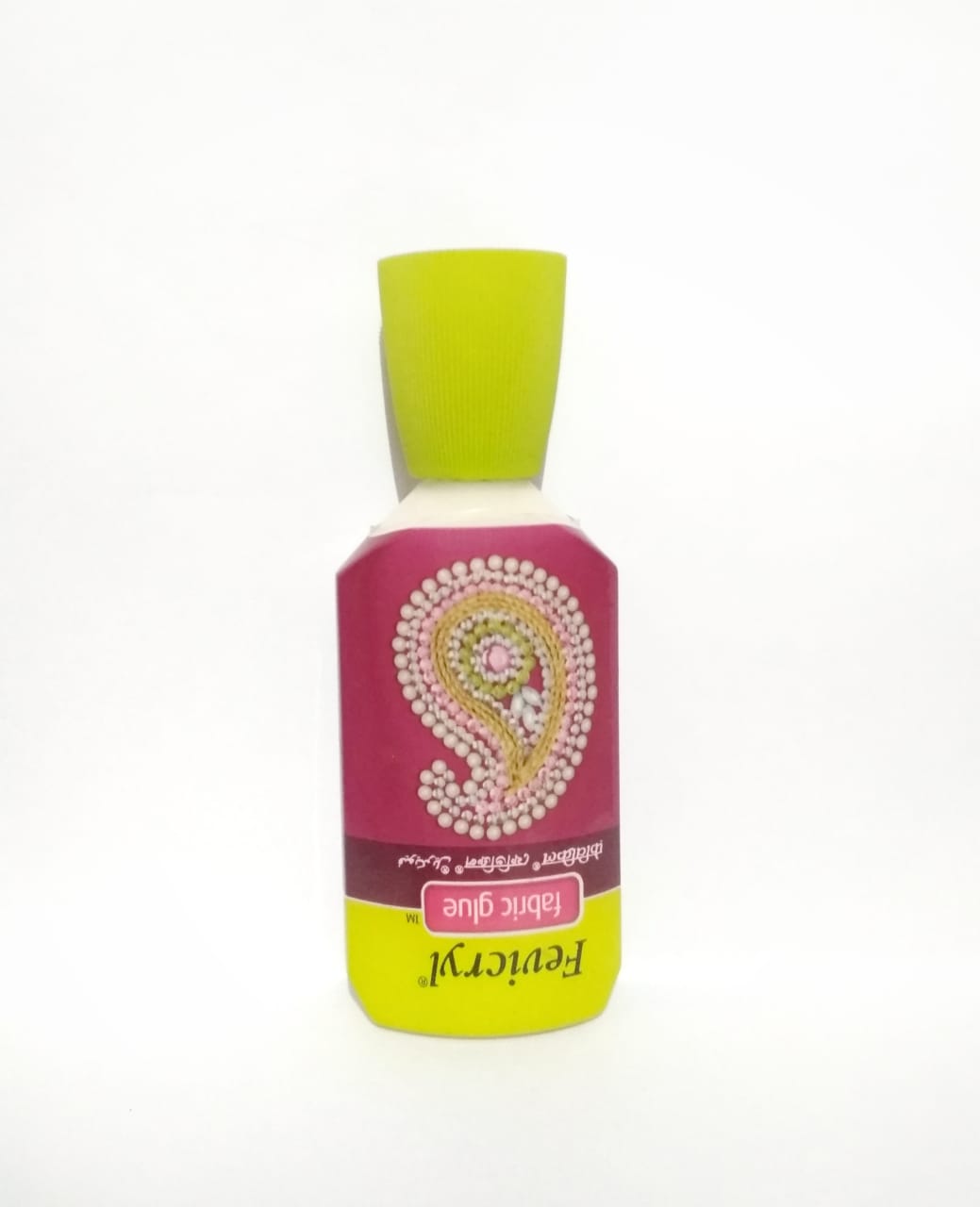
To get the best results with quilling, it is important to use the right glue. The best glue to use for paper quilling is a water-based glue specifically designed for the craft. It should be acid-free and non-toxic, so it is safe to work with. It should also be easy to apply and not contain any lumps or clumps. The glue should be strong enough to hold the paper in place, but not so strong that it is difficult to unroll the paper or release shapes.
It should also be able to dry quickly and not leave any residue on the paper or the surface. When choosing a glue for paper quilling, it is important to read the labels and make sure that it is suitable for the type of paper you are using. Many regular craft glues can be too weak or not bond properly with the paper. For the best results, use a glue specifically designed for paper quilling. This will ensure that your project looks professional and lasts for a long time. With the right glue, you can make beautiful paper quilling art that will wow everyone!
What do you glue quilling to?
When it comes to quilling, using the right glue is essential for achieving the desired result. Depending on the type of quilling you are doing and the material you are using, you can choose from various glues such as PVA glue, hot glue, and craft glue. For general use, PVA glue is suitable for gluing paper quilling to other surfaces like wood and cardboard. Hot glue is a great choice for gluing quilled pieces to fabric or upholstery. It’s quick and easy to use, but be sure to use a low heat setting to avoid damaging the fabric.
Craft glue is a good option for assembling quilled shapes and creating collages. It dries clear and is acid-free, making it perfect for scrapbooking. White glue is also suitable for many quilling projects as it dries quickly and has a strong bond. It is also acid-free and can be used with paper and fabric. If you’re looking for a more permanent hold, you can use spray adhesive, but be sure to use it in a well-ventilated area as it releases fumes. Overall, when it comes to gluing quilling pieces, choose the right glue for the material you are using and the end result you are aiming for.
What is the best glue for paper crafts?
The best glue for quilling is a precision glue pen, which is specially designed for use in paper crafting. This type of glue is easy to control, so it’s perfect for applying small, intricate pieces. It also sets quickly and will not damage the paper. Another option is a glue stick. This is a great choice if you need to apply large amounts of glue, but it can be difficult to control when working with small pieces.
If you prefer a liquid glue, you can use a craft glue that is designed specifically for paper crafts. This type of glue is designed to stick quickly and securely without smudging or wrinkling the paper. When choosing a glue for quilling, the most important thing is to select one that works best for your project. A precision glue pen is a great choice for applying small, delicate pieces, while a craft glue is better for larger projects. Whichever glue you choose, make sure to follow the manufacturer’s instructions for best results.
What glue do you use for paper quilling
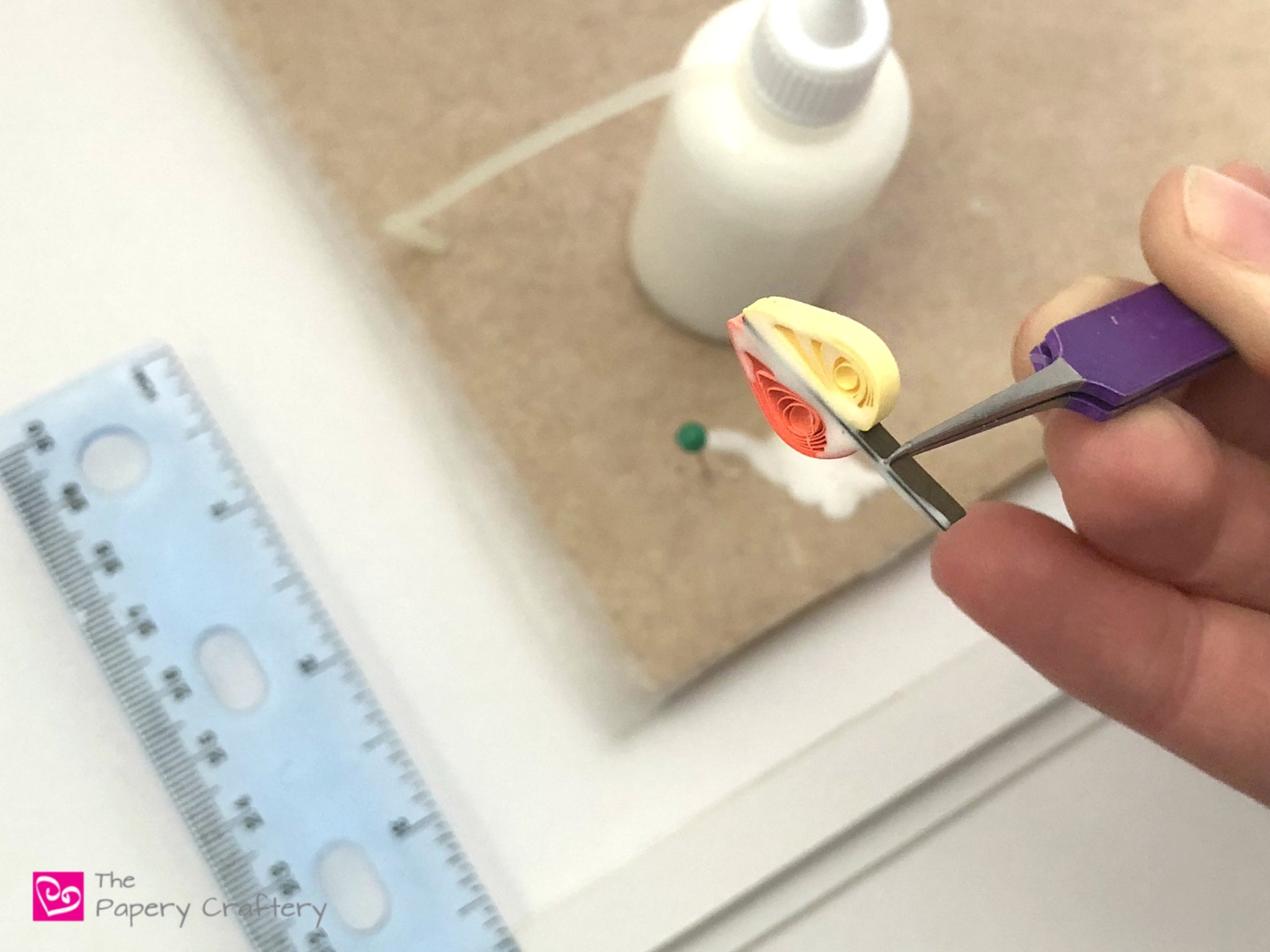
When it comes to paper quilling, adhesives are the key to successful crafting. The most popular glue to use for paper quilling is a water-based adhesive. It is easy to work with and will keep your paper strips in place. You can find water-based adhesive in any craft or hobby store. It is usually sold in small bottles and is a clear-colored liquid.
It is often labeled as “quilling glue”. When using water-based adhesive, you should use it sparingly. You don’t want to saturate the paper strips with too much glue, as this may make your quilling patterns look messy. For best results, use a toothpick to apply the adhesive, as this will allow for a more precise application of the glue. It is important to let your quilling pieces fully dry before handling them. Once the adhesive has dried, it will be securely bonded to your paper strips, giving you a strong quilling design. With the right tools and materials, you can create stunning quilling projects! With the correct adhesive, you can make sure your paper quilling pieces stay in place and look great.
What are the 3 basic supplies you would need to do quilling?
To begin quilling, there are three basic supplies you will need: paper strips, a slotted tool, and glue. The paper strips used for quilling come in various sizes and colors to suit the desired design. They can be purchased at craft stores, or you can make your own by cutting or tearing paper into thin strips. When it comes to deciding which glue to use for quilling, there are a few options. White craft glue is an excellent choice since it dries clear and holds the paper strips together for a long time.
Glue sticks can also be used, but be careful not to use too much as it will cause your quilling to become messy. If you plan on making very intricate designs, it may be useful to invest in a glue pen in order to precisely apply the glue. No matter which type of glue you choose, make sure to use it sparingly. Too much glue will cause the paper strips to become sticky, and it will also add unwanted bulk to your quilling. To sum up, the three basic supplies you will need for quilling are paper strips, a slotted tool, and glue. Depending on the design, you can choose either white craft glue, a glue stick, or a glue pen. Just be sure to use the glue sparingly, as too much can create an undesired effect.
How can I seal my quilling project?
Choosing the right glue for quilling is important to ensure that your project is properly sealed and lasts for a long time. There are several types of glue you can use when quilling, the most popular being PVA glue, white glue, and stick glue. PVA glue is a strong, water-resistant adhesive that dries quickly, making it a great choice for quilling projects. White glue is also a good option for gluing paper, but it is not as strong as PVA glue. Stick glue is best for quilling projects that need to be sealed quickly and must also remain flexible.
To ensure that your project is properly sealed and lasts a long time, it is important to use the right amount of glue. For quilling projects, you should use a thin layer of glue that covers the entire surface of the project. Once the glue has dried, a generous amount of sealant should be applied to protect the project from weathering and moisture. For best results, it’s important to use the right tools when applying the glue and sealant. You should use a soft brush to evenly distribute the glue, and a foam brush to apply the sealant. By taking the time to choose the right glue and applying it correctly, your quilling project will be properly sealed and will last for years to come.
What is the first step of quilling?
The first step of quilling is to choose the right glue for the project. It is important to choose a glue that won’t damage the quilling paper or the artwork. There are a few types of glue that are especially good for quilling, such as white glue, craft glue, and glue sticks. White glue is the most common type of glue used for quilling and is safe for use with paper. It also dries clear and has a thin consistency, making it easier to apply.
Craft glue is also a popular choice for quilling, as it has a thicker consistency and dries quickly. Glue sticks are great for quilling projects because they are easy to control and have less mess. When choosing a glue for quilling, it’s important to make sure it dries clear and won’t damage the paper. It’s also important to read the instructions and safety warnings on the glue packaging before use. Lastly, make sure to use the glue sparingly, as too much glue can cause the paper to wrinkle or tear. By following these steps, you can ensure you have the right glue for your quilling project. With the right glue in hand, you can start creating beautiful quilling pieces!
What kind of glue do you use for quilling
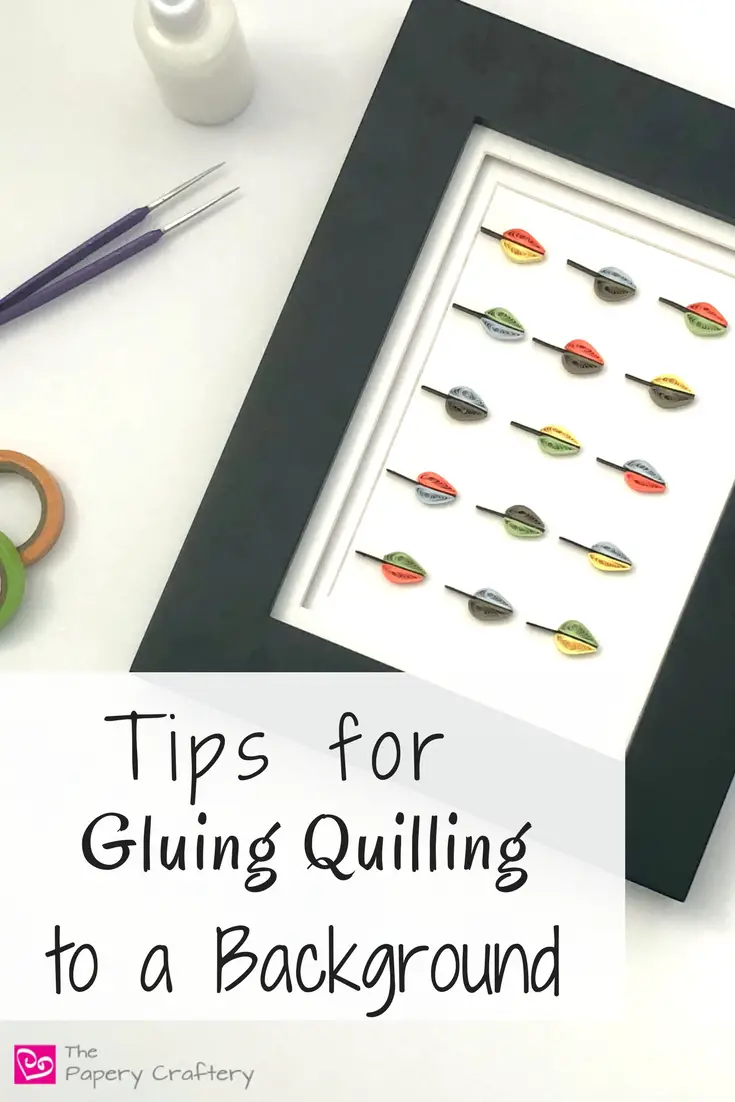
To make sure your quilling projects stay together, it is important to pick the right glue. The most popular type of glue for quilling is PVA glue, or polyvinyl acetate glue. This glue dries clear, making it ideal for quilling where you don’t want the glue to be visible. PVA glue also dries quickly, making it easy to use. If you want to add a finishing touch to your quilling projects, you can also use a glue stick.
Glue sticks are generally easier to use than liquid glue, as they don’t require precision when applying. Another popular choice is acrylic glue. This type of glue dries quickly and is very strong, making it great for quilling projects where you need the pieces to stay firmly in place. For larger pieces of quilling, a hot glue gun can also be used. Hot glue guns can be used to add extra strength to the quilling project, however you should be careful when using it as it can create an uneven surface. Whichever type of glue you choose, make sure you use it sparingly as too much glue can ruin your quilling project.
Can you use Mod Podge for quilling?
When it comes to quilling, choosing the right glue is essential. Mod Podge is a popular choice, as it is highly versatile and easy to use. It can be used as a glue, sealer, and finish, making it ideal for quilling projects. Mod Podge dries quickly, making it easier to handle and easier to work with, even on delicate designs. It forms a strong bond between paper, allowing it to stay in place without slipping or shifting.
It’s also available in a variety of finishes, so you can choose the one that best suits your project. You can find Mod Podge in matte, glossy, and glitter finishes, and even with a sparkle or shimmer. Mod Podge is a cost-effective option for quilling projects, as it can be used for a variety of purposes. The only caveat is that Mod Podge is not acid-free, so it may cause discoloration over time. Overall, Mod Podge is an excellent choice for quilling projects. It is easy to use, provides a strong bond, and is available in a variety of finishes. With its versatility and affordability, it is no wonder why Mod Podge is such a popular choice for quilling projects.
What kind of glue to use for quilling
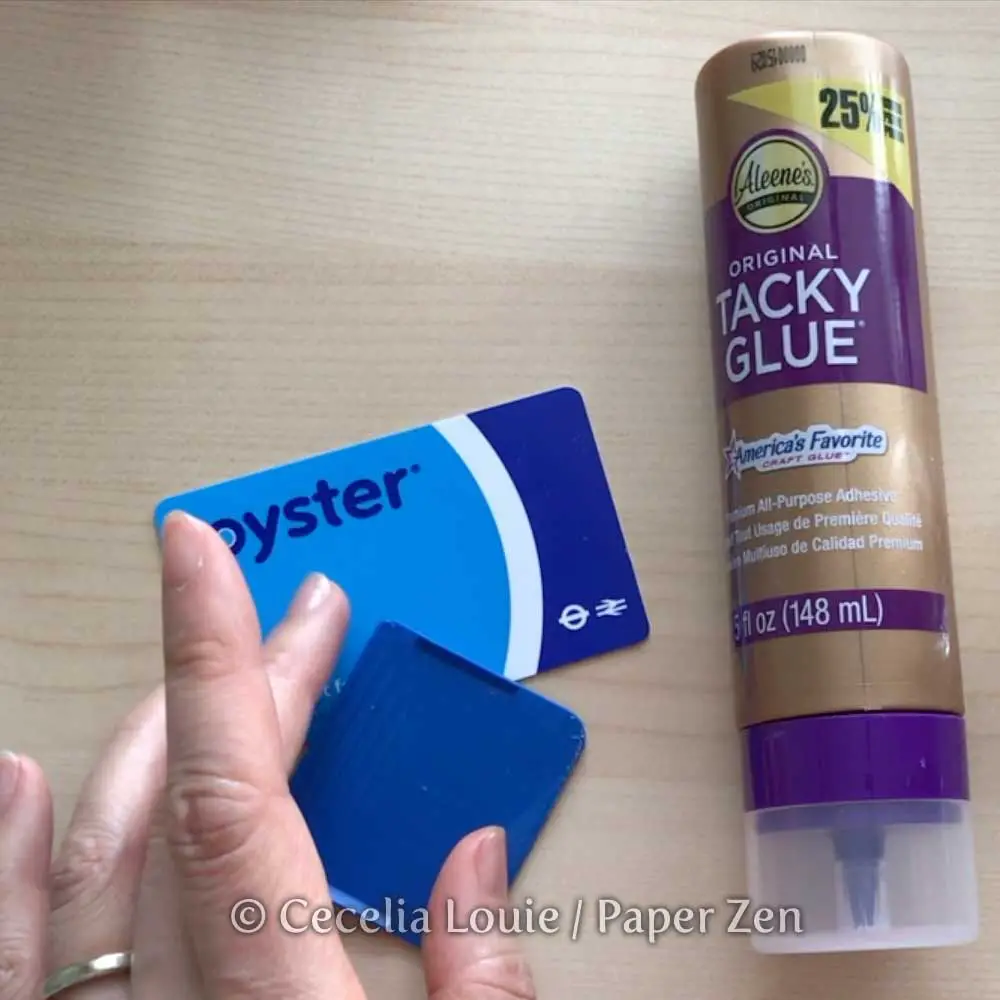
Choosing the right glue for your quilling project is an important step to ensure the longevity of your masterpiece. PVA glue is the most popular type of glue for quilling. It dries clear and flexible, allowing you to move the paper strips around to achieve the desired look. But, if you’re looking for a slightly stronger bond you may want to opt for a water-based contact adhesive. This glue is ideal for attaching quilled pieces together and can be used in conjunction with PVA glue.
White glue is also a great option for quilling and is especially effective when attaching quilled pieces to cards or other surfaces. The downside of white glue is that it can be difficult to control the amount and can lead to a messier finish. If you’re looking for a glue that won’t be visible on your quilling project, you may want to try using a glue stick. This type of glue will hold quilled pieces together without leaving a trace. Finally, if you’re looking for something a bit more permanent and waterproof, you can use a craft glue such as Aleene’s Tacky Glue. This type of glue is ideal for creating intricate and delicate designs, as it dries clear and won’t warp the paper strips. Ultimately, the type of glue you use for your quilling projects will depend on the complexity and permanency of your designs. Regardless of what type of glue you choose, make sure to take your time and test a small section before applying it to your project.
Why do you need a white glue for quilling?
When it comes to quilling, choosing the right glue is essential. White glue is often the preferred choice for quilling projects. This type of glue is acid-free, long-lasting, and dries clear, making it perfect for paper crafting. White glue also works well because it sticks quickly, but it still allows time for you to adjust the pieces before they are permanently set. This makes it easy to align the quilled pieces in the right spot before they’re secured in place.
White glue is also easy to use and doesn’t have a strong odor. This makes it much more pleasant to work with, especially if you’ll be spending a lot of time quilling. Furthermore, white glue is great for quilling because it won’t discolor the paper. Other types of glue, such as rubber cement, could leave a yellowish tint on the paper, ruining your quilled designs. In short, white glue is the perfect choice for quilling because it’s easy to use, quick to dry, and won’t damage the paper. With white glue, you can create beautiful quilled pieces with confidence.
How to glue quilling to paper
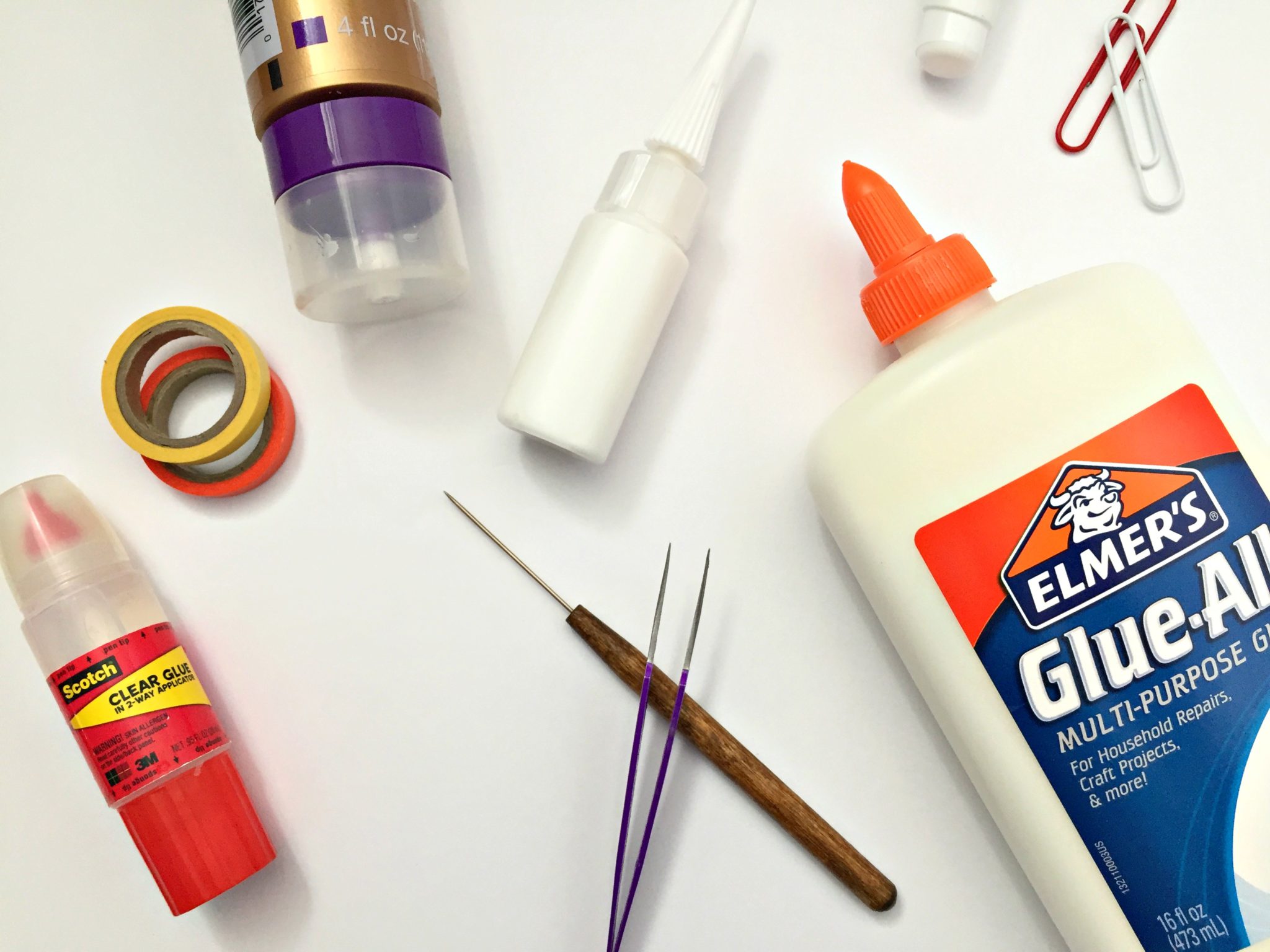
When it comes to gluing these designs onto paper, a good quality glue is essential. PVA glue is one of the best glues to use for quilling as it dries quickly and is relatively easy to work with. Liquid glue is also an option, but it tends to be messier than PVA glue and takes longer to dry. When gluing quilling designs to paper, it is important to use a thin layer of glue as too much can cause the paper to become warped. The glue should be applied evenly over the entire surface of the quilling design and then left to dry.
Once the glue is dry, the quilling design will be securely attached to the paper. Another type of glue that can be used for quilling is glue sticks. Glue sticks are great for quilling because they are easy to use and can be found in a variety of different sizes. They also dry relatively quickly and can provide a strong bond between the quilling design and the paper. Finally, it is important to remember to use the right type of glue for your quilling project. PVA glue and glue sticks are both good options, but if you are using a heavier paper, liquid glue may be the best choice. Whichever type of glue you decide to use, make sure to apply it evenly and only use a thin layer to ensure a secure bond between the quilling design and the paper.
How do you glue Paper quilling to acetate?
When it comes to quilling, one of the most popular materials to use is acetate. Acetate is a lightweight, flexible type of plastic that is great for projects like quilling. When gluing paper quilling to acetate, it is important to use a glue that is specifically designed to work with this material. There are a few different types of glue that can be used, such as craft glue, decoupage glue, or a glue specifically designed for quilling. If using craft glue, it is important to make sure it is designed to work with acetate.
The same goes for decoupage glue and any other glue that is used. When it comes to gluing paper quilling to acetate, it is important to apply the glue thinly and evenly. This will ensure that the quilling sticks securely and that no parts of the paper are left unglued. Once the glue is applied, it can be left to dry for a few minutes before the paper quilling is applied. It is also important to note that the paper quilling should be applied carefully and slowly. This will help to ensure that the paper does not become misshapen and that the quilling layers stick together properly. By following these steps, you can get the best results when it comes to gluing paper quilling to acetate.
How to make Paper quilling at home?
To get started, you’ll need some basic supplies, such as quilling paper, quilling tool, and glue. The glue you use is important because it will help to hold the quilling paper in place. The best type of glue to use when quilling paper is a craft glue. Craft glues are specially formulated for paper crafts and are generally safe, non-toxic, and of course, adhesive. You can buy craft glue in a variety of forms, such as a stick, a bottle, or a tube.
When quilling, you don’t need a lot of glue. A small amount on the end of the quilling paper is enough. You can also dab a little bit of glue on the ends of the coils to hold them in place. Be sure to allow the glue to dry before you proceed with your quilling design. To ensure a neat and tidy quilling design, use a toothpick or a quilling needle tool to carefully apply the glue. This will help you control the amount of glue you use and make sure that it is evenly applied. Finally, if you’re not sure which type of glue to use, ask a craft store employee for help. They should be able to provide guidance and advice on the best type of glue for quilling. With the right supplies and a little bit of patience, you can create beautiful paper quilling designs at home.
Does dust stick to glue when quilling?
When it comes to quilling, it is important to choose the right glue. One question people often ask is, “Does dust stick to glue when quilling?” The answer is yes – dust can stick to glue, but it depends on the type of glue you are using. For quilling projects, it is best to use a glue specifically designed for paper crafting. This type of glue will be less likely to attract dust. It is also important to check the label and make sure that the glue is acid-free so that it does not discolor the paper.
If you are looking for a more permanent option, you can use a tacky glue for quilling. This type of glue is designed to resist dust, and it will hold your quilling pieces securely in place. You can even use a craft spray adhesive for a strong bond. Finally, you can opt for an all-in-one adhesive like a decoupage glue. This type of glue is ideal for quilling because it is easy to apply and dries quickly. It is also strong enough to protect your paper from dust and dirt. No matter which glue you choose, it is important to make sure that it is designed specifically for paper crafting. This will help you get the best results and help you avoid dust sticking to your glue.
What kind of glue do you use for quilling?
When it comes to quilling, the type of glue you use can make a big difference. The best glue for quilling is a glue specifically designed for paper crafts. This glue is usually either water-based, or acid-free and non-toxic. This type of glue is less likely to cause discoloration and damage to your paper craft. Many craft stores sell glue pens specifically for quilling.
This type of glue is easy to use and is great for small, intricate designs. It dries quickly and provides a strong bond. If you don’t have access to a specialized quilling glue, you can also use a regular school glue. School glue is great for larger designs, and can be used to fix rolled paper in place. Finally, you can use a hot glue gun for quilling. Hot glue provides a strong bond, but can be hard to use on small, intricate designs. It is also not recommended for children’s crafts since it can be quite dangerous. No matter what glue you use, it is important to make sure it is non-toxic and acid-free to ensure that your paper craft is safe and long-lasting.
